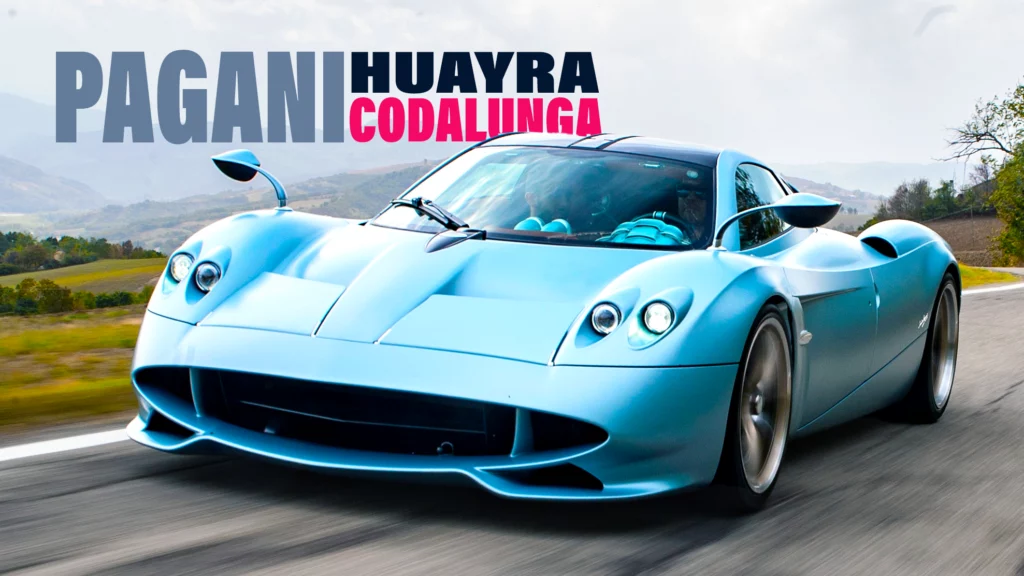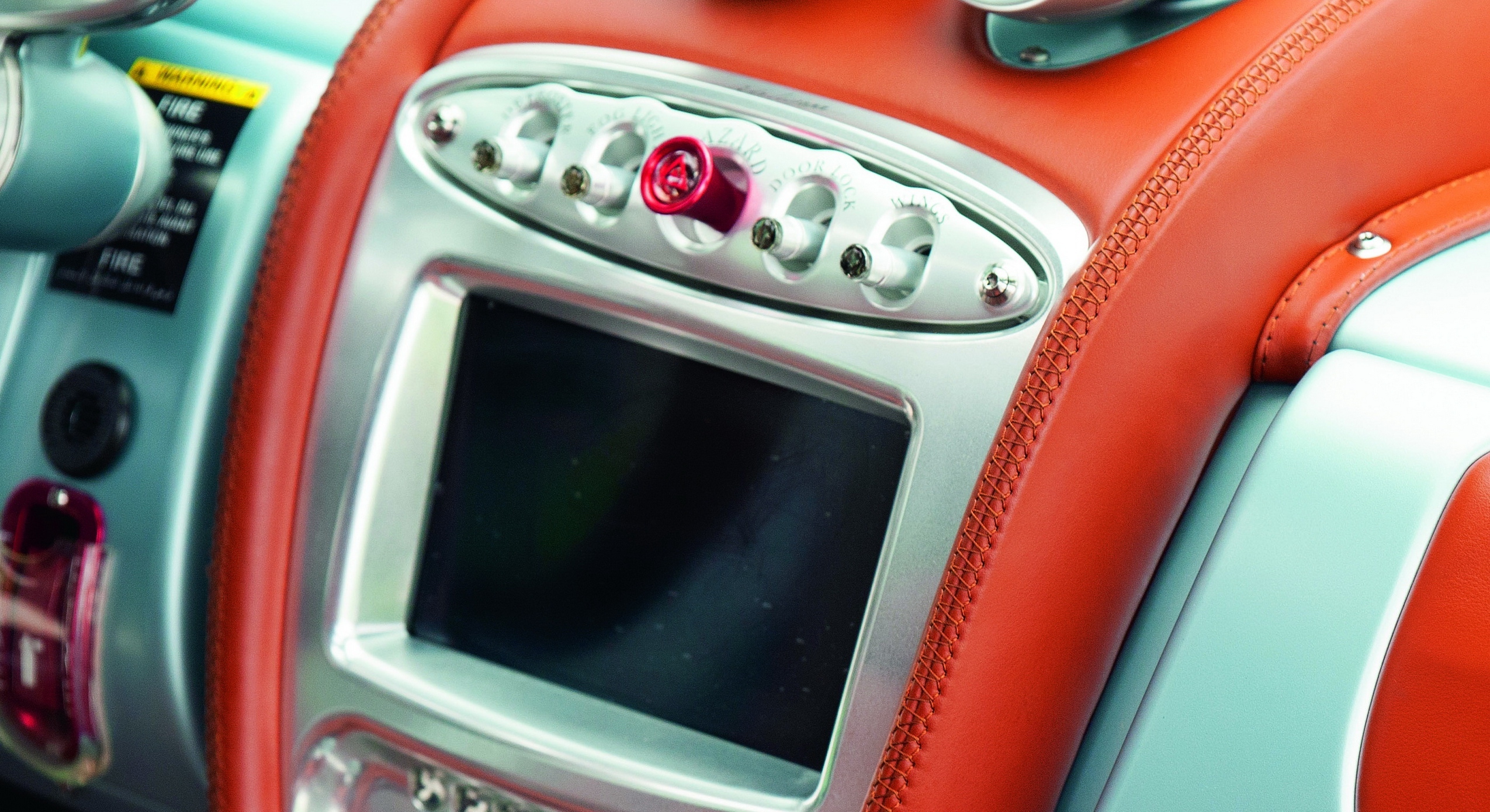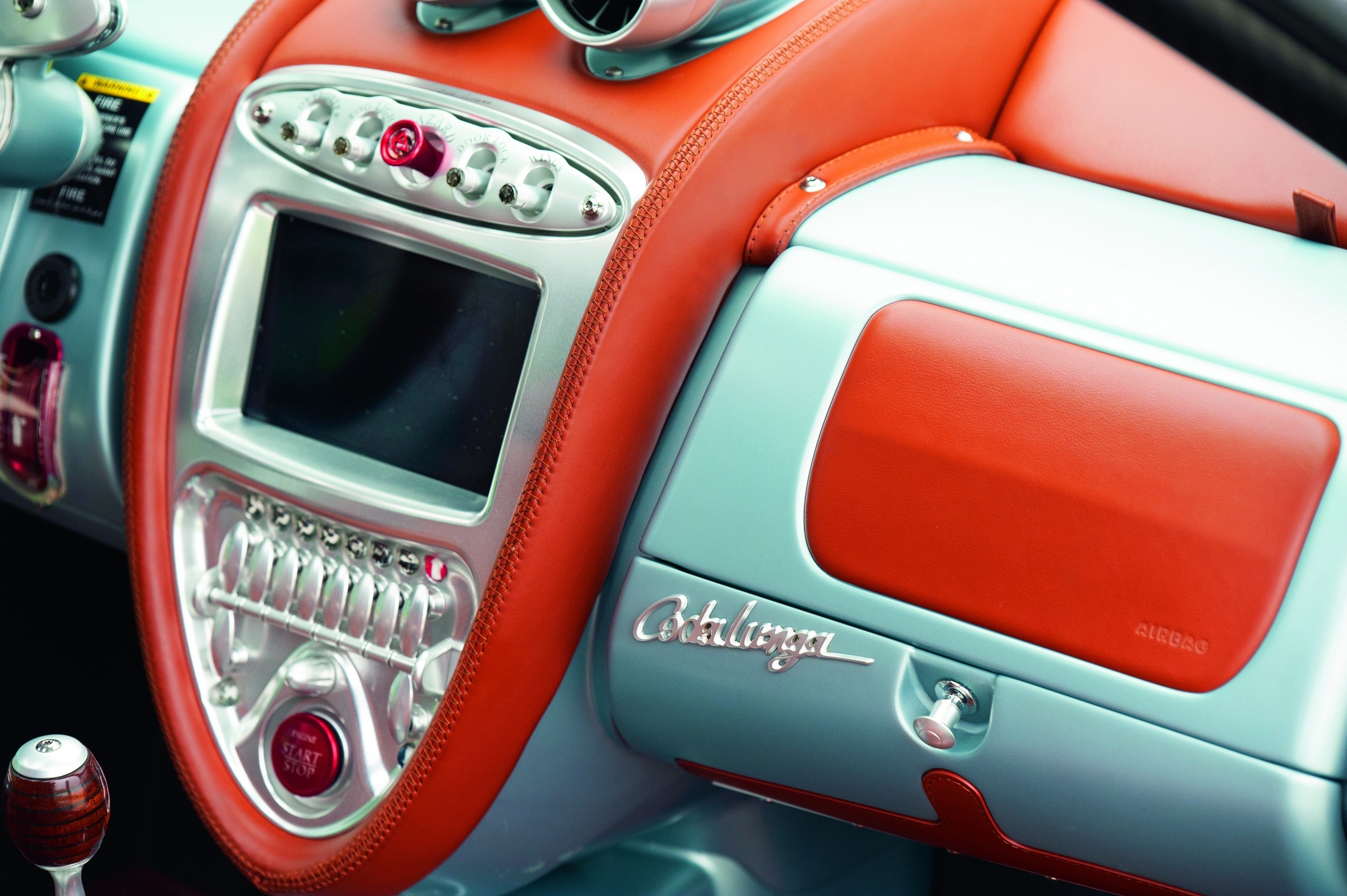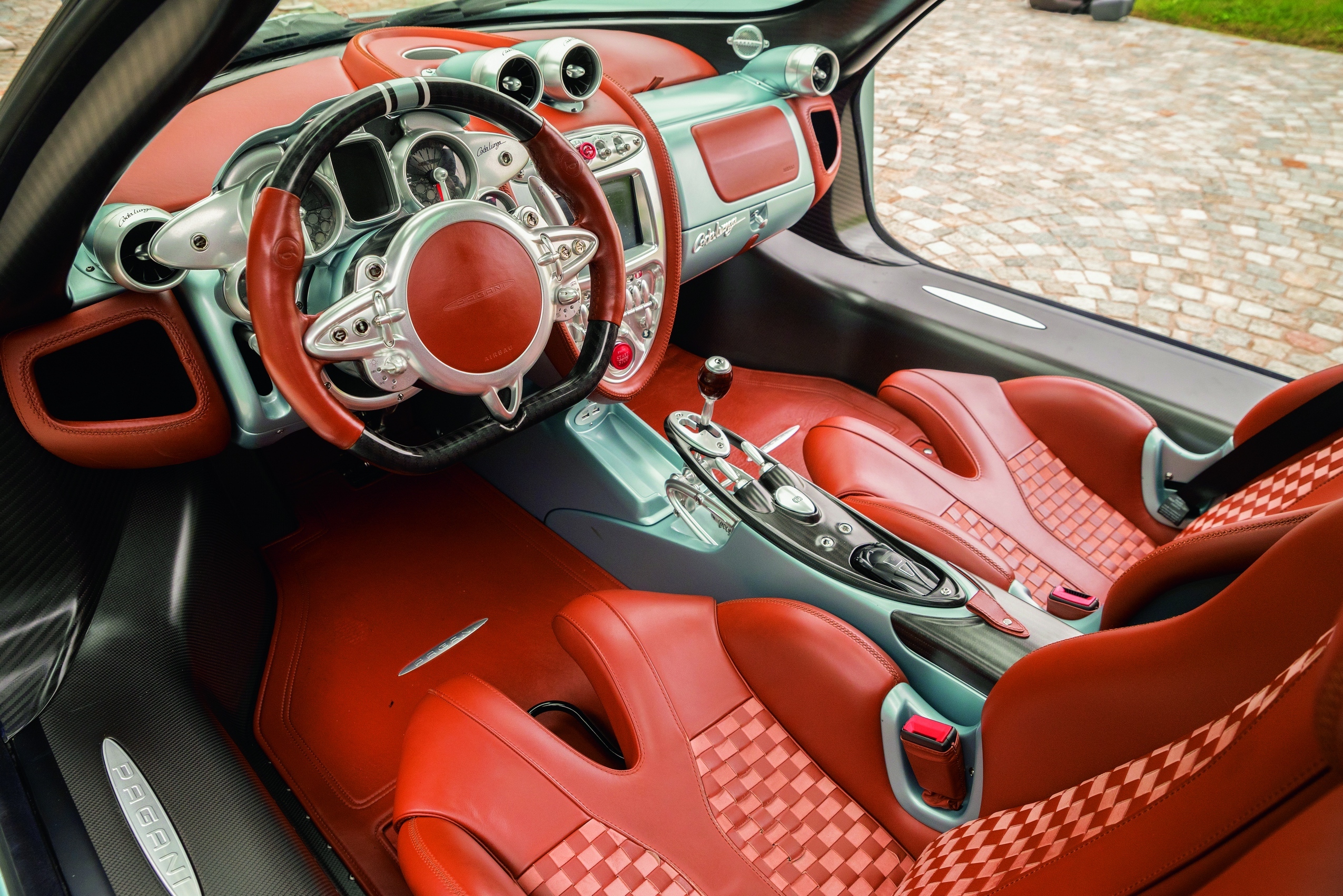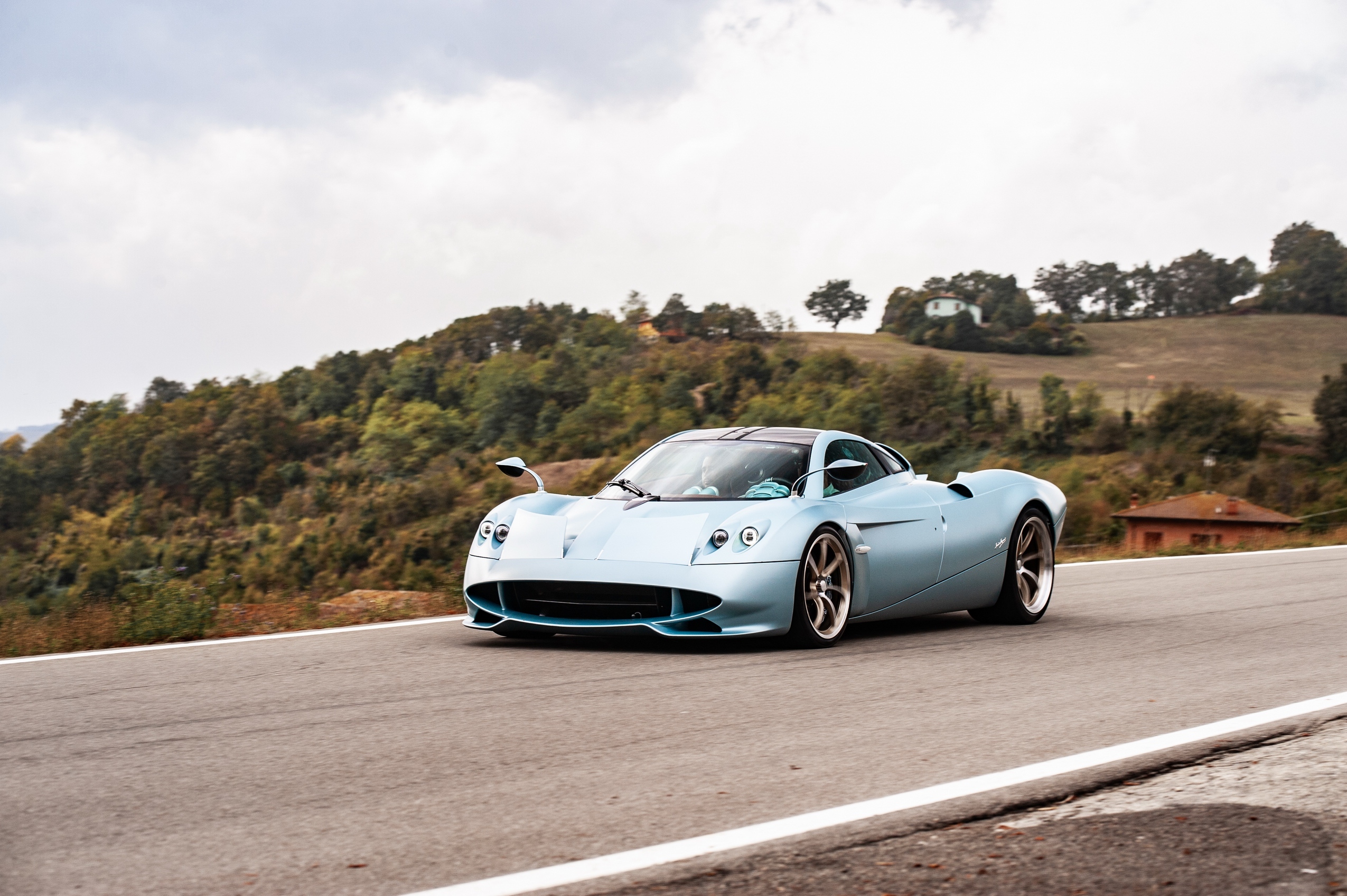Six years ago, when the world was living a simpler time—by which I mean devoid of self-driving hoverboards and AI-robot pizza chefs, with the biggest automotive concern being the lack of a cup holder in a Bugatti, a pair of Pagani enthusiasts knocked on Horacio Pagani’s door with a rather curious request: they wanted a long-tail version of the Huayra Coupé, or as they so poetically phrased it in Italian, the “coda lunga” – literally translating to “long tail.”
Their vision was to create an elegant hypercar with a clean and streamlined design, a model that would turn heads faster than a surprise Taylor Swift album drop – and be just as coveted on the road as at any Concours d’Elegance.
After what seems like an eternity of fine-tuning with Pagani‘s elite “Grandi Complicazioni” special projects team, the Codalunga was officially born. Longer and smoother than a Huayra, it draws inspiration from the long tails of the swinging ’60s that raced at Le Mans. Those machines, with their razor-sharp lines and relentless pursuit of speed and aerodynamic efficiency, birthed some of the most iconic shapes in motoring history.
Quick Facts
Photos Dimitris Manolaros & Aggelos Skanavis
Timeless design
The Codalunga stretches a substantial 360mm or 14.2 inches longer than its Huayra Coupe counterpart, but that’s merely scratching the surface. Its uniqueness lies in the intricate details, such as its dual headlights, a departure from the typical quadruple setup, and the distinct styling of the rear lights. Notably, there are no grilles at the rear, offering an unobstructed view of the exquisite exhaust system. Crafted with a white ceramic coating – a first in production cars – it showcases not only the exhaust but also the engine and suspension components in all their glory.
Furthermore, it marks Pagani’s first departure from exposed carbon fiber on the body, allowing the vehicle to fully flaunt its stunning semi-matte hue, christened Azzuro Sardinia. Complementing this aesthetic shift, the wheels are redesigned to aid in brake cooling.
More: $7.6M Pagani Huayra Codalunga Long-Tail Is Five Of A Kind
The interior is just as distinctive. Adorned with bespoke leather and nubuck upholstery featuring a fashion-inspired pattern, the seats exude Italian poshness. Of course, there’s a complementary matching luggage set too. The dials and center console closely mirror those of the Huayra, featuring toggle switches reminiscent of those found on airplanes.
Photos Dimitris Manolaros & Aggelos Skanavis
Despite its traditional appearance, the interior boasts modern features like Apple CarPlay. The craftsmanship throughout the cabin is remarkable, with aluminum components machined from a single block. Even the gear knob, which combines wood and carbon layers, undergoes a meticulous process that spans several days.
A symphony of numbers
The numbers for the Codalunga are truly remarkable – and that’s before even considering the price tag. It boasts Pagani’s ever-present 6.0-liter twin-turbocharged V12 sourced from Mercedes-AMG, delivering a staggering 829 hp (840 PS) and 811 lb-ft (1,100Nm) of torque, available from 2,000 to 5,600 rpm. This power is transferred to the rear wheels via a single-clutch, seven-speed Xtrac automatic transmission. Pagani hasn’t communicated a 0-62 mph (0-100 km/h) acceleration figure, but to put it in layman’s terms, let’s just say it’s “stupidly fast.” By the time you utter those words in about 2 point something seconds, the Codalunga will probably have already blasted past that speed.
Naturally, the carbon-ceramic brake rotors are colossal, complemented by six-piston calipers at the front. The best part is the weight: despite accommodating such a colossal V12 powertrain, the Codalunga tips the scales at just 2,822 pounds (1,280 kilograms). Fun fact: that’s precisely the same weight as a Toyota GR Yaris!
However, these figures alone fail to encapsulate the full essence of the Codalunga. One of the defining features that set the Pagani Huayra apart since its inception in 2011 was its innovative employment of aerodynamic flaps, strategically positioned even at the front of the car. Each flap operates independently, responding to the driver’s inputs, enhancing the hypercar’s ability to brake and corner with increased agility. The transformative impact these components have on the driving experience is difficult to articulate but truly amazing to experience.
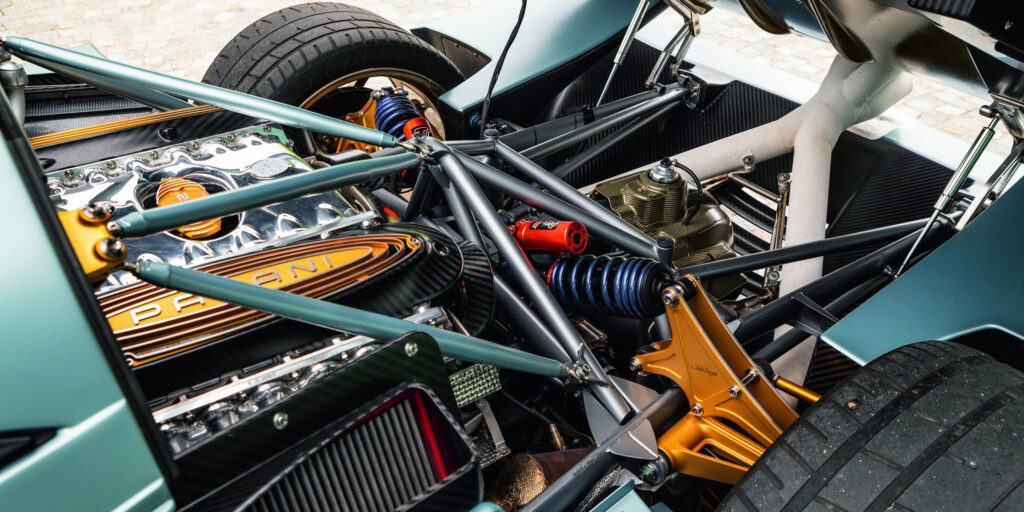
Although the production of the Codalunga was strictly limited to just 5 units worldwide, all of which have been swiftly snapped up by eager collectors, we were fortunate enough to get behind the wheel of the prototype vehicle used during its development phase, owned by Pagani themselves.
Read: One Of Five Pagani Huayra Codalungas Seized By Swiss Police
But before we dive into the driving dynamics, here’s another nugget of trivia for you: Remember that Pagani Huayra Codalunga we reported getting seized by Swiss police last month? Well, amusingly, it’s the very same one you see right here. According to hearsay from a colleague of ours, a journalist was purportedly at the helm when it happened. Although the specifics remain murky, we’re left to wonder if the car was confiscated for breaking the sound barrier or perhaps some other “violation.”
$7,630,000 on a mountain pass
Exploring the boundaries of such a costly and potent hypercar on the byroads of Modena can be daunting. Yet, once behind the wheel of the Codalunga, you’ll be pleasantly surprised by how effortlessly it drives at any pace. It’s comfortable for extended journeys or even daily commutes, aligning perfectly with Horacio Pagani’s vision for his cars. Even the minutiae, such as the mechanical sounds while shifting gears manually or the sound of the turn signals, are genuinely distinctive and elevate the feeling inside the car.
One thing that stood out was that in the Normal driving mode, it felt akin to driving any ordinary car – albeit with lowered ground clearance and reduced visibility. The steering isn’t light, but the car is surprisingly easy to operate at low speeds, even with the single-clutch gearbox. The Codalunga has a revised suspension setup which, in this mode, is unexpectedly comfortable and offers a great ride quality by absorbing the bumps on the road, a feature that Pagani’s engineers were eager to highlight. Coupled with its bespoke luggage set, it transforms into a top-tier travel companion.
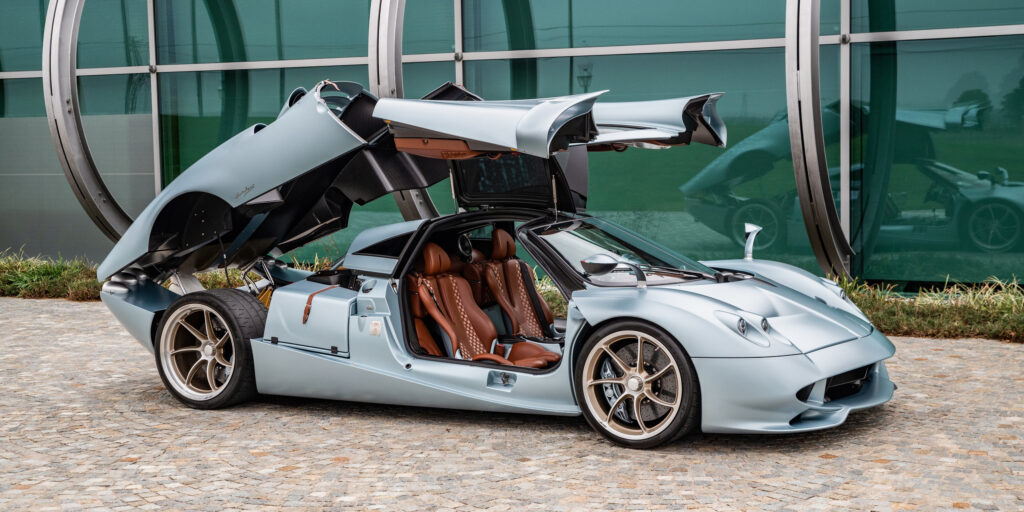
Three additional driving modes are at your disposal: Sport and Race, both amplifying throttle response and suspension stiffness, while Wet mode reduces power output by half to bolster safety in low-traction conditions. Opting for Race mode allows for some slip on the rear axle, prompting steering adjustments while maintaining manageable boundaries, providing an exhilarating yet controlled driving experience.
We don’t need to tell you that as soon as we hit the mountain pass, Race mode became the sole driving mode of choice. It transforms the car from a comfortable grand tourer into an almost untamed racecar, delivering savage performance.
Having the wind at your back
The steering when driving fast is exceptional: it’s very precise and responsive to even the slightest input providing excellent feedback on wheel position and road surface conditions. The wide tires on all four corners provide immense traction. Despite being a long car, it can change directions instantly almost at any speed. This is where the significance of the aerodynamic flaps becomes evident: you can observe them opening during heavy braking and fast corners, enabling the car to surpass the traction limit you initially perceive. Particularly during braking, you can sense the car being pressed down by the air.
It’s always fascinating to witness aerodynamics in action, but in the Codalunga, it elevates the experience to a whole new level. It feels like defying the laws of Physics, while expertly applying them with effortless style. After all, the Huayra was named after Wayra-Tata, an Andean wind god.
The stiffened suspension eliminates any body roll, rendering the Codalunga predictable and fully stable at any speed. Gear changes from the Xtrac automated transmission become faster and more aggressive, delivering a strong kick on the upshifts and instant downshifts.
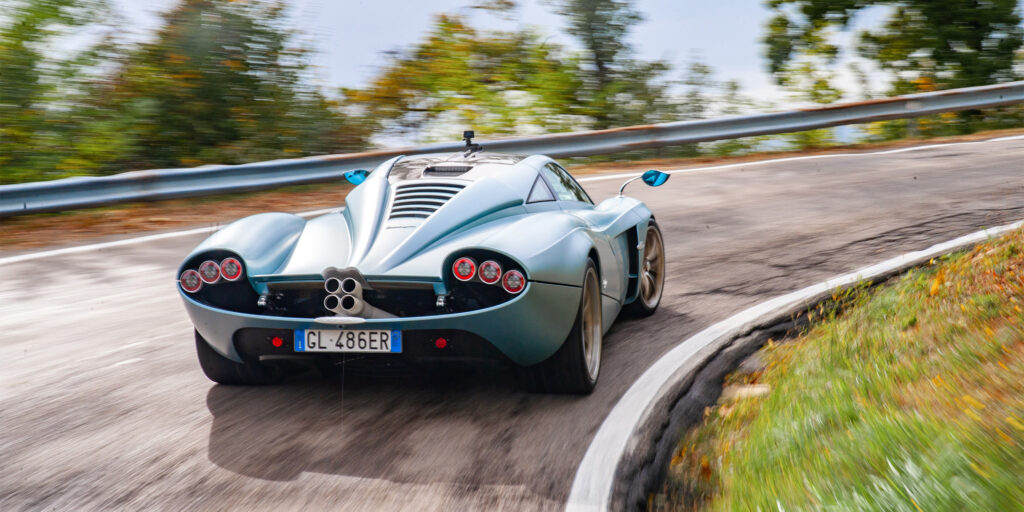
In these modes, the exhaust becomes louder, producing exhilarating crackles and bangs. The sounds of the turbos sucking air right behind you and the swooshes when you lift the throttle further elevate the driving experience culminating in an unforgettable climax.
Moments like this make you truly understand why there’s been no clamor for an electric Pagani, as Christopher Pagani, Head of Marketing for Pagani Automobili America and son of Horacio Pagani, pointed out during our conversation.
What’s the verdict?
This might sound predictable and perhaps even cliché, but let me tell you: the Huayra Codalunga was a completely different experience to anything I’ve driven to this day. It’s a paradox made perfect, a harmonious marriage of untamed power and surprising comfort. Mere words fail to capture the transformative experience this machine offers.
Until you’ve had the pleasure of driving it yourself, you simply can’t fathom how it stands apart from the herd of supercars out there. The marriage of immense power with feather-light weight, all wrapped up in a meticulously crafted and stunningly beautiful package, is nothing short of extraordinary. It’s a testament to automotive artistry.
And indeed, it remains a singular marvel, with a mere five units ever made, all of which were swiftly snatched up despite commanding a princely sum starting at a staggering €7 million, or about $7.6 million at current exchange rates. The one I had the privilege to drive was none other than the prototype for the Codalunga, a development vehicle that remains an integral part of the esteemed Pagani collection.
The Pagani Codalunga serves as a fitting and extraordinary finale to the Huayra lineage of road cars. As the company’s focus shifts firmly towards the Utopia Coupe, Pagani’s next revolutionary hypercar, the torch has officially been passed.
We teamed up with Autotypos.gr to bring you this review on Carscoops



